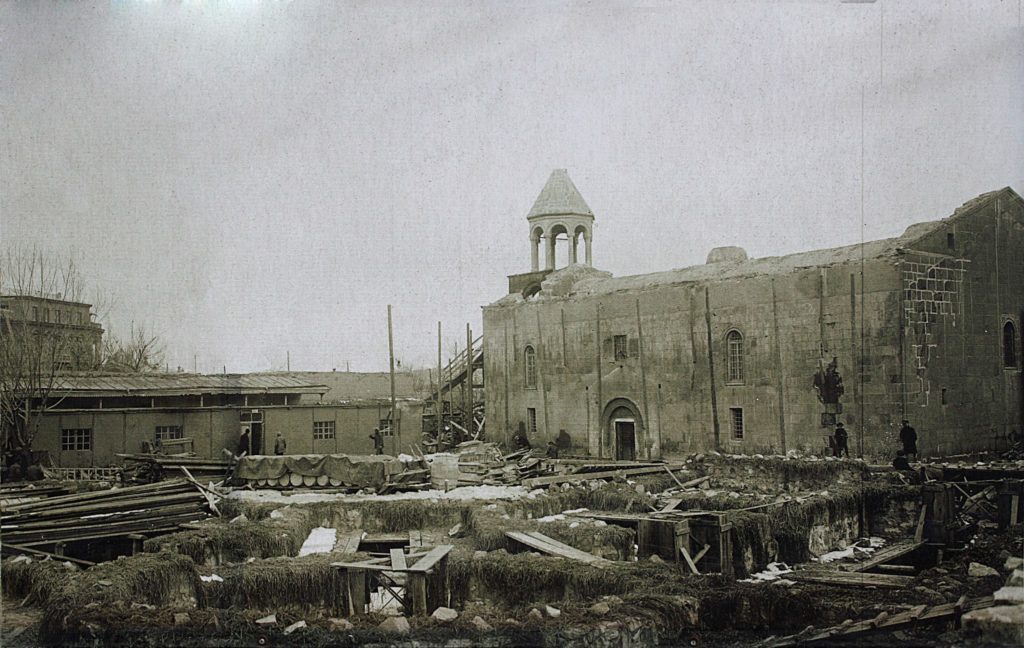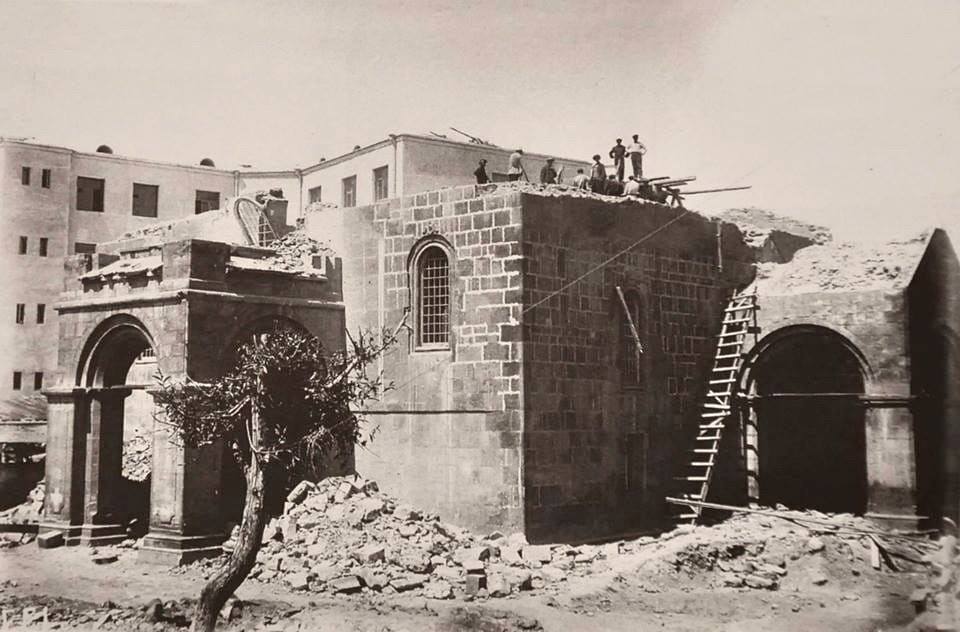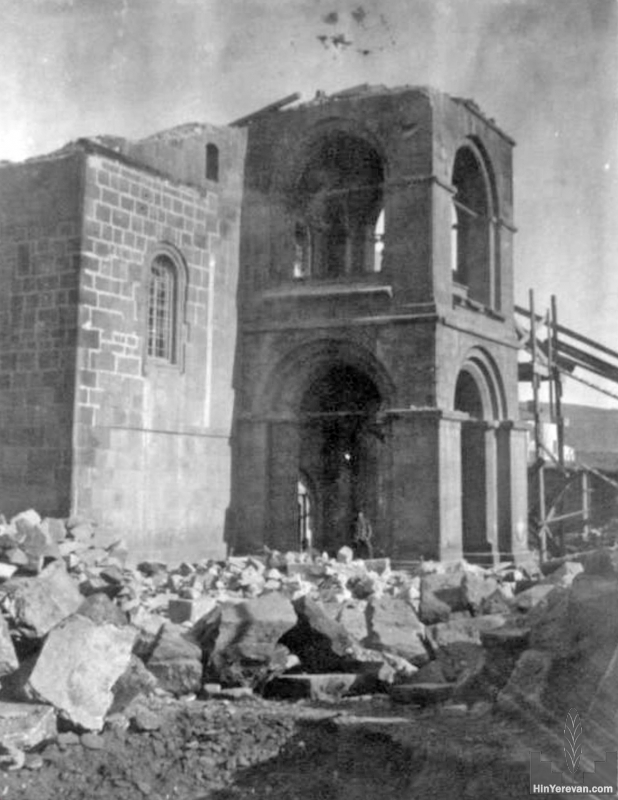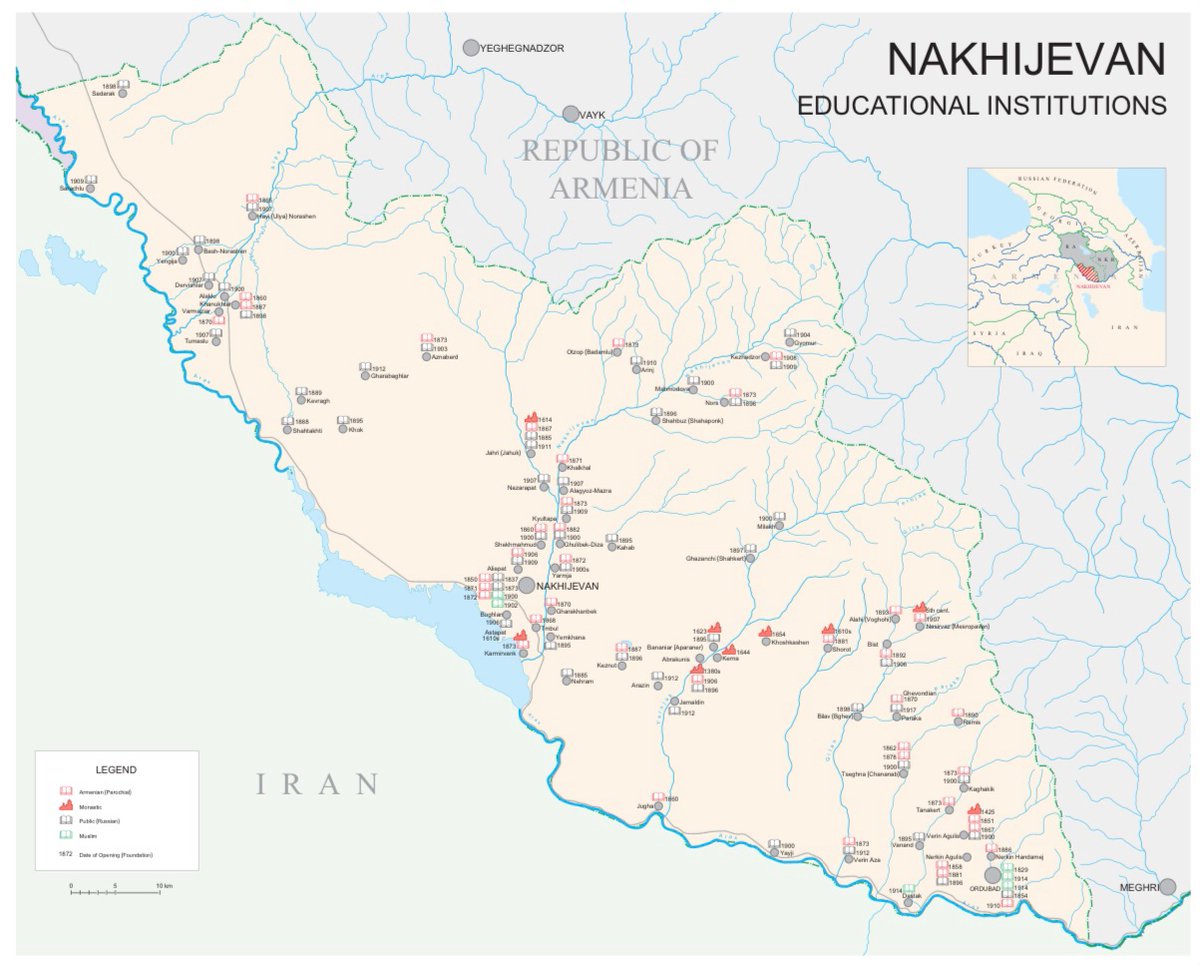
In this thread I'll be listing the churches of #Yerevan, #Armenia. I'll break them down by district and go attempt to chronicle the history of each structure.
#Christianity #Architecture #History
#Christianity #Architecture #History

Kentron District is the historic core of Yerevan. Its where the former Fortress of Yerevan was located and is home to 125,453 people (as of the 2011 Census). 

The Cathedral of Saint Sargis (Surb Sargis Mayr Yekełetsi) is located in the historic Dzoragyugh neighborhood of Kentron District. The site has been home to a monastic complex since the 4th century. 



Saint Sargis was the oldest structure and dates to 1453, although it was destroyed during the 1679 earthquake. It was rebuilt in 1693. It was once again rebuilt in 1835-1842 following Yerevan’s annexation by the Russian Empire in 1828. 







Here you can see the Cathedral and its environs:
1-2) A photograph (left) and a sketch (right) showing the Cathedral and the Blue Mosque (1765).
3-4) Photographs showing the Cathedral from the area that is today Republic Square.



1-2) A photograph (left) and a sketch (right) showing the Cathedral and the Blue Mosque (1765).
3-4) Photographs showing the Cathedral from the area that is today Republic Square.
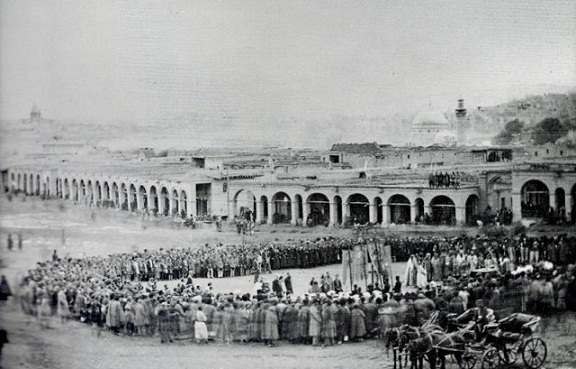
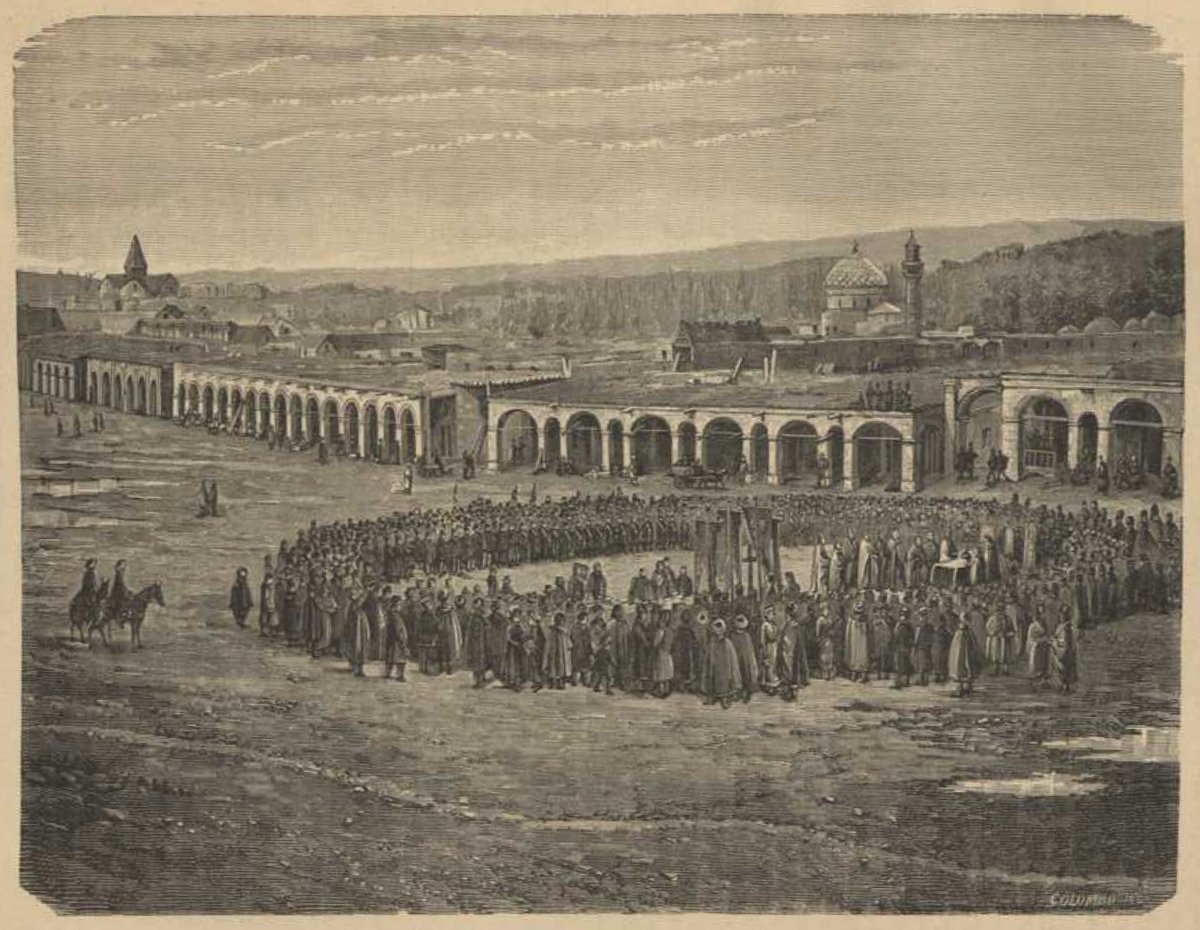
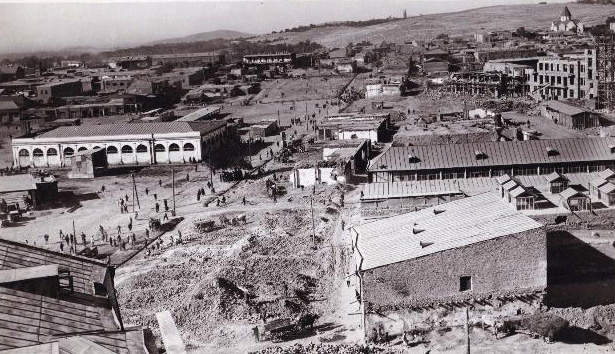
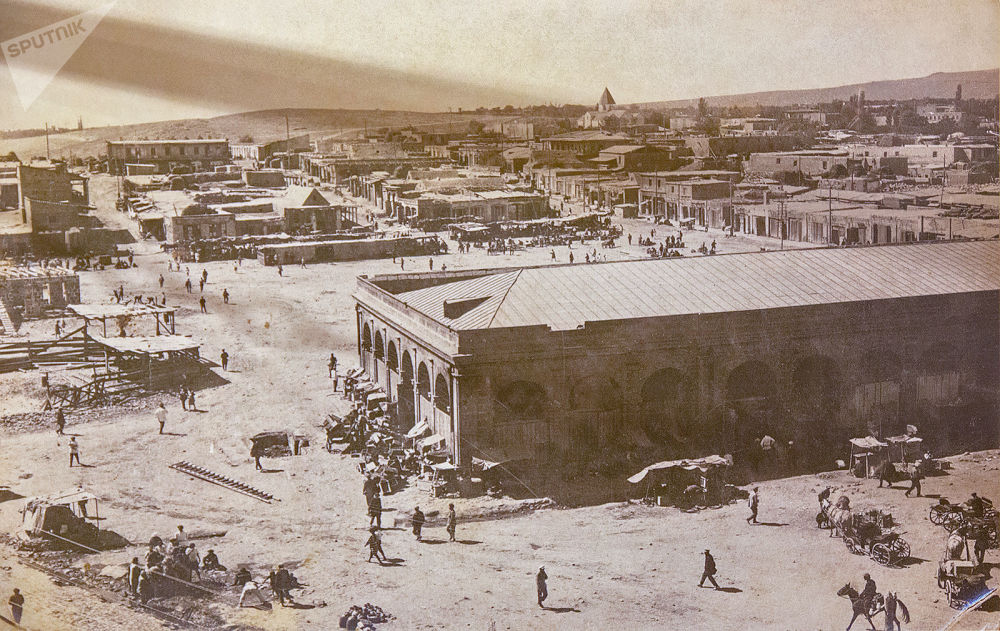
In 1971-1976 its walls were covered with orange tufa stone from Ani and its dome was also replaced. In 2000 a bell tower was constructed at the site. The other chapels of the monastery were Saint George (Surb Gevorg) from 1691 and Saint Jacob (Surb Hakob) from 1763. 







The Church of Peter-Paul (Surb Poghos-Petros Yekełetsi) was located in the historic Hin Kałak neighborhood of Kentron District. It was the oldest standing church in Yerevan in the early 20th century. 







It was first built in the 5th century and its parish priest was present at the 607 Council of Dvin. It was damaged during the 1679 earthquake, but restored in 1691-1692, 1778, and 1820. 







Here you can see sections of the interior: image on the left is from 1915 and image on the right is from 1927. 



In 2010 a group attempted to purchase the land where the “outdoor theater” (image 4) of the Moscow Cinema is located to reconstruct the church, but to no avail. 







The Church of Saint John the Baptist (Surb Hovhannes Mkrtich Yekełetsi) is located in the historic Kond neighborhood of Kentron District. It was first built in 670 and was restored in the 15th century. 
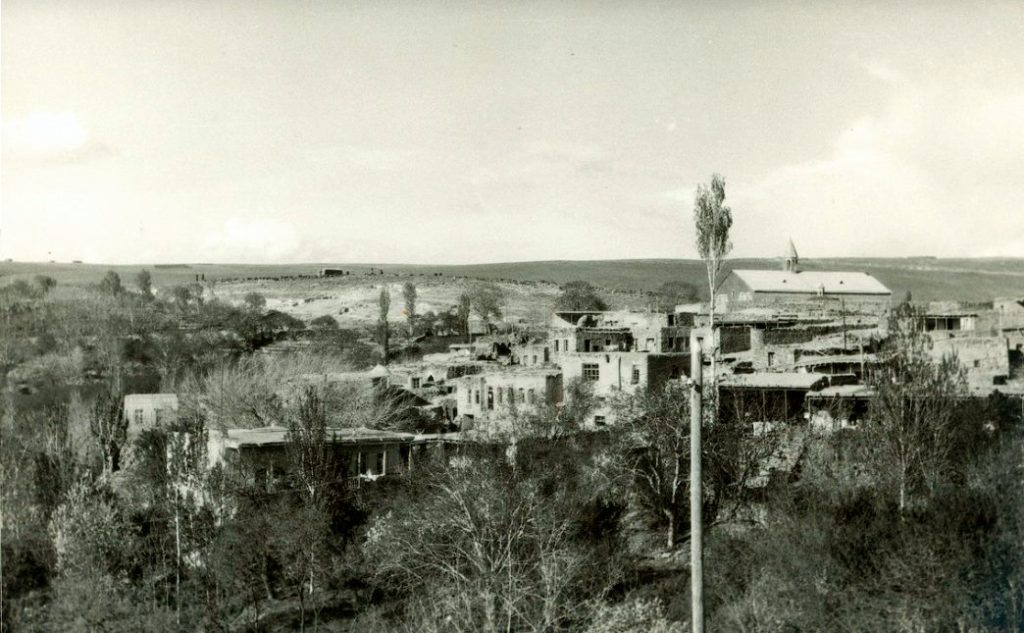
It was damaged during the 1679 earthquake, but rebuilt in 1691 and 1708-1710 by Melik Aghamal, son of Melik Tsatur, the Armenian Meliks (Lords) of Yerevan who used the church as their personal house of worship. The church was renovated in 1983-2000. 







The Church of Zoravor Holy Mother of God (Zoravor Surb Astvatsatsin Yekełetsi) and Chapel of Saint Ananias (Surb Ananiayi Matur) are located in the historic Hin Kałak neighborhood of Kentron District. The original chapel was first built in the 9th century. 


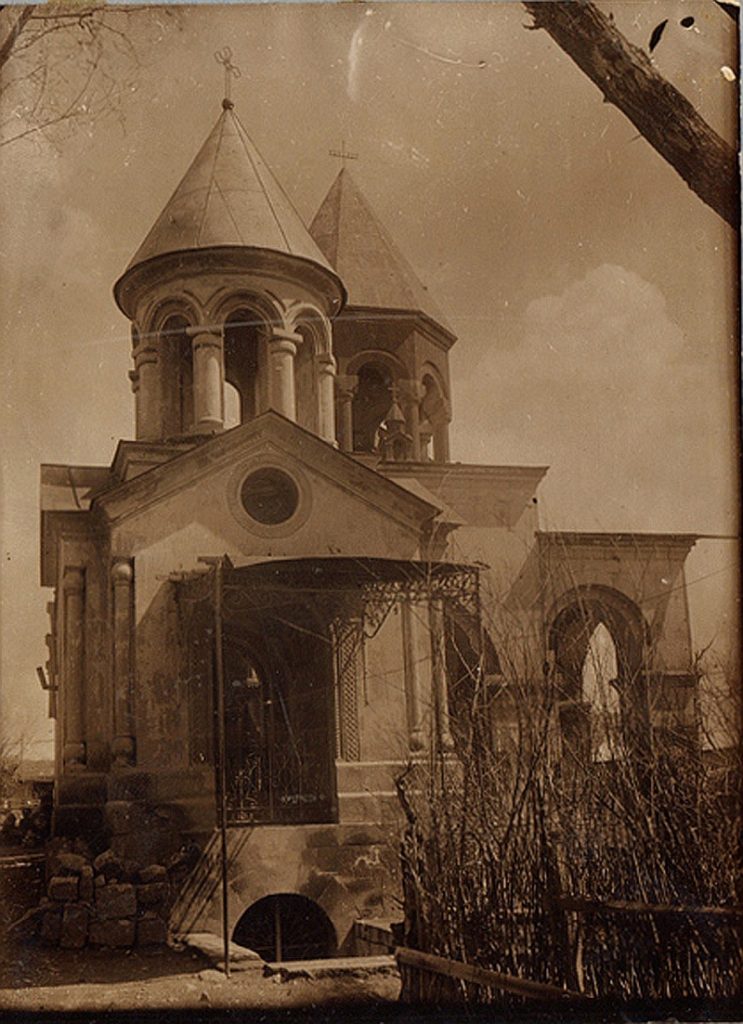


In the 13th century it became home to a Bible known as “Zoravor.” A large monastery was built here by a monk named Movses Syunetsi during the tenure of Catholicos Pilipos I of Armenia (t. 1632-1635). It was damaged in a fire in 1635-1636 and destroyed during the 1679 earthquake. 







It was rebuilt in 1693-1694 by a merchant named Khoja Panos. It was renovated a century later by a certain Gabriel Haryurapet during the tenure of Catholicos Ghukas I (t. 1780–1799). In 1889 the ancient chapel of Saint Ananias was rebuilt. The complex was renovated in the 1970s. 







The Church of Katoghike Holy Mother of God (Katoike Surb Astvatsatsin Yekełetsi) is located in the historic Hin Kałak neighborhood of Kentron District. It is the oldest standing church of Yerevan currently. It was said to resemble 7-10th century architecture. 







The church bears inscriptions from 1229, 1264, 1284, 1301, 1318, and 1609. The church was damaged during the 1679 earthquake, but rebuilt in 1693-1695. 







In 1936 while Soviet authorities began demolishing the church they found the chapel encased within the walls of the larger church. Archeologists successfully pressured the authorities to not destroy the chapel. 






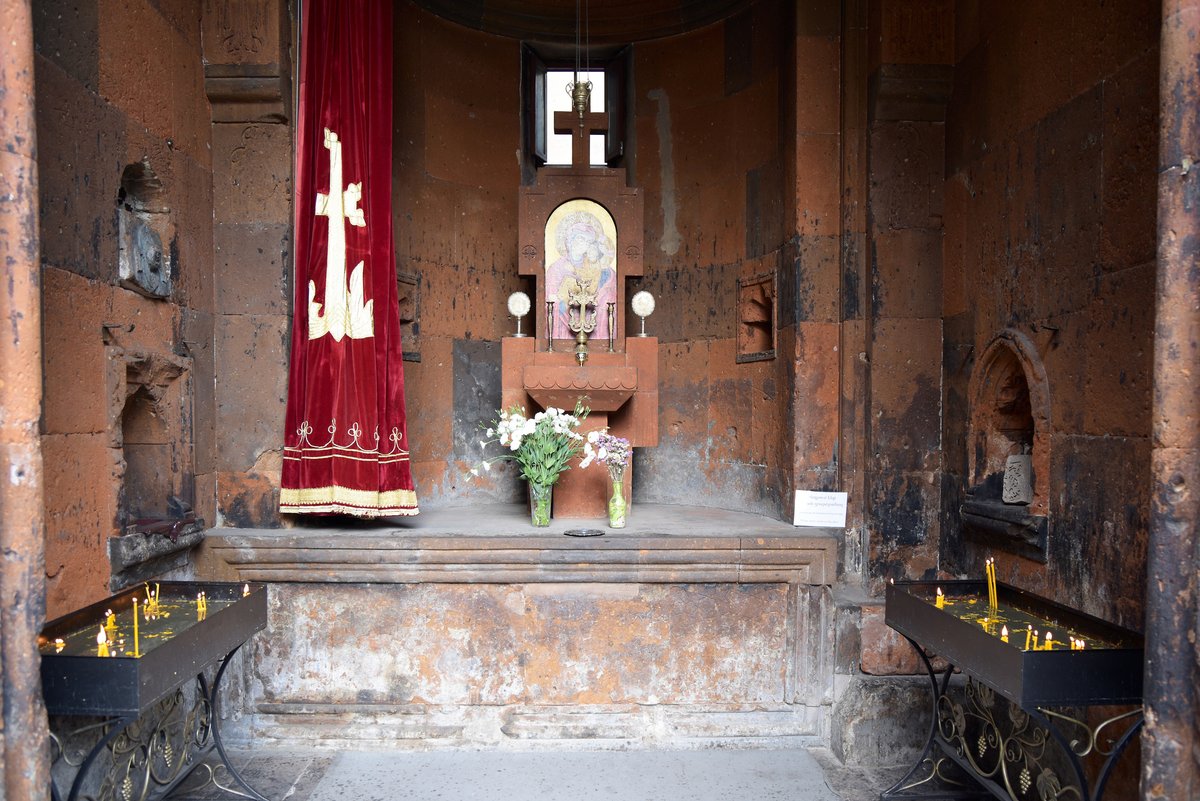
In 2009-2015 the Church of Saint Anna was erected next to the medieval chapel. It was consecrated on April 30, 2015. There is also a Pontifical Residence on the grounds of the complex. 






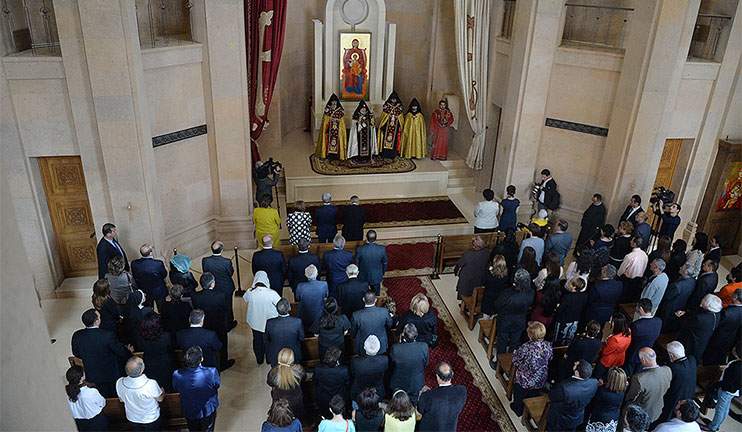
The Chapel of Gethsemane (Getsemani Matur) was located in the historic Hin Kałak neighborhood of Kentron Districtbuilt in the 11-13th centuries. It was renovated in 1901 by brothers Isahak and Hovhannes Melik-Aghamalyan. 


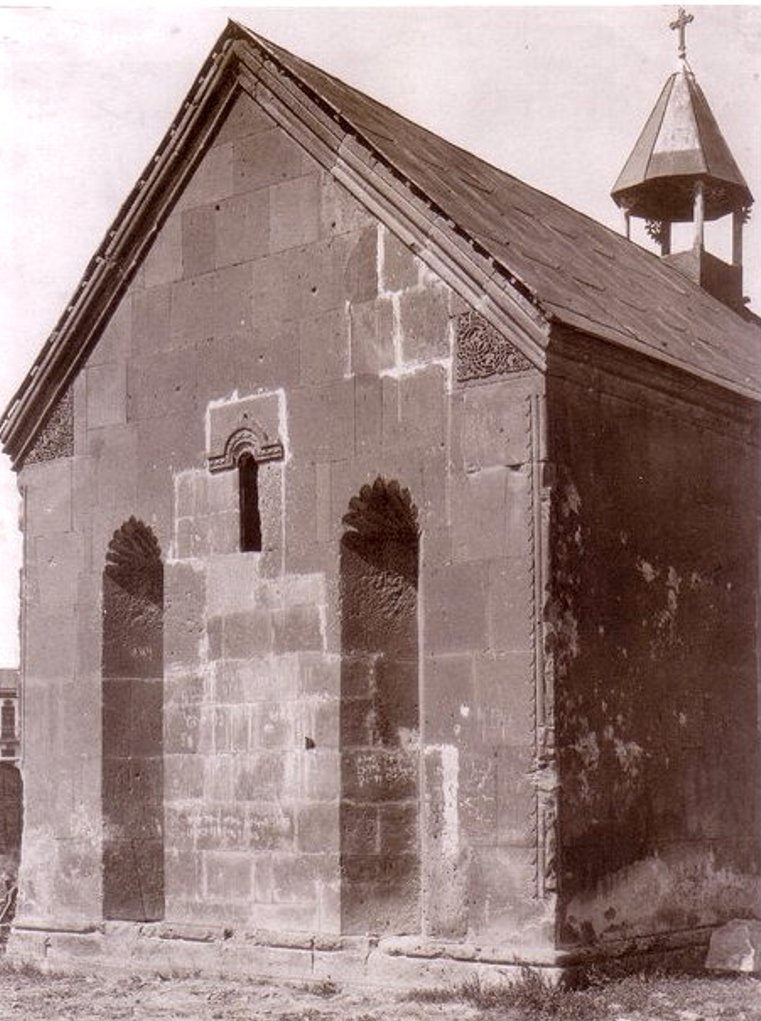
Isahak (t. 1898-1904) and Hovhannes (t. 1904-1910; 1912-1914) both served as Mayors of Yerevan. The Melik-Aghamalyans had been the Meliks of Yerevan since the 15th century. In 1930-1933 the Armenian National Academic Theatre of Opera and Ballet was built in its place. 


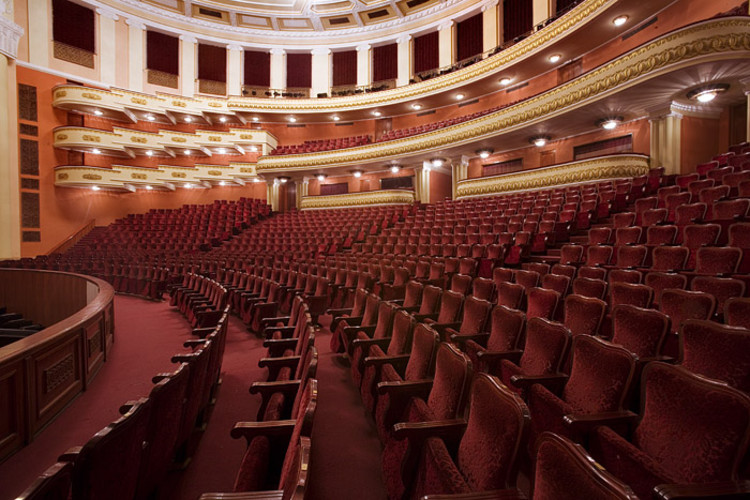
The Cemetery and Chapel of Kozern (Kozerni Gerezmanots yev Matur) were located at the northern edge of the historic Kond neighborhood of Kentron District. The cemetery was named after Hovhannes Kozern, an 11th century calendarist who was buried there. 







Catholicos Moses III was buried here in 1632; a chapel was built over his grave. The chapel was destroyed during the 1679 earthquake and rebuilt in the 19th century. In the 1930s the cemetery was destroyed and the chapel converted into a residential house that still stands today. 







The Church of Saint Gregory (Surb Grigori Yekełetsi) was built in 1869-1900 in the historic Hin Kałak neighborhood of Kentron District. It was one of the largest structures in Yerevan at the time. 







Here you can see the Church of Saint Gregory from:
1-2) Koghbatsi Street
3) Paronyan Street (Blue Mosque on the right)
4) Ghantar Market (Blue Mosque on the left)



1-2) Koghbatsi Street
3) Paronyan Street (Blue Mosque on the right)
4) Ghantar Market (Blue Mosque on the left)


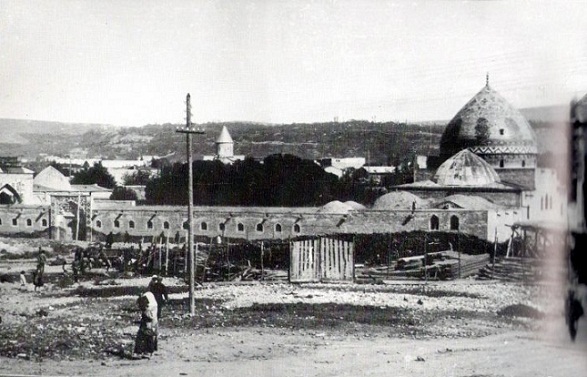
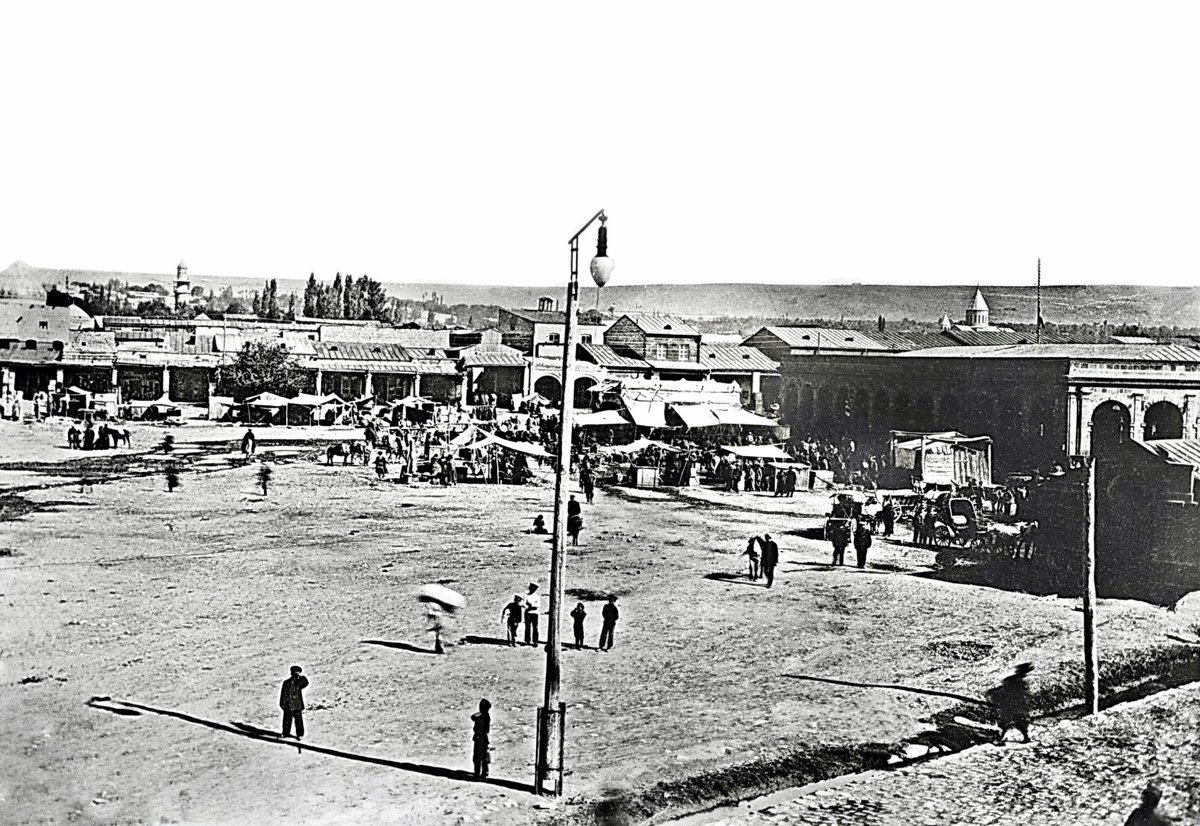
It was destroyed in 1939 and replaced by the Yeghishe Charents School on the southeastern corner of Amiryan and Koghbatsi.
1) View from Republic Square
2) View from Kond (Russian Orthodox Saint Nikolai Cathedral on the right)
3) Yeghishe Charents School today


1) View from Republic Square
2) View from Kond (Russian Orthodox Saint Nikolai Cathedral on the right)
3) Yeghishe Charents School today



The Cathedral of Saint Gregory the Illuminator (Surb Grigor Lusavorichi Mayr Yekełetsi) was built in 1997-2001 in Kentron District and opened on the 1700th Anniversary of the conversion of the Kingdom of Armenia to Christianity. It is the largest Armenian Church in the world. 



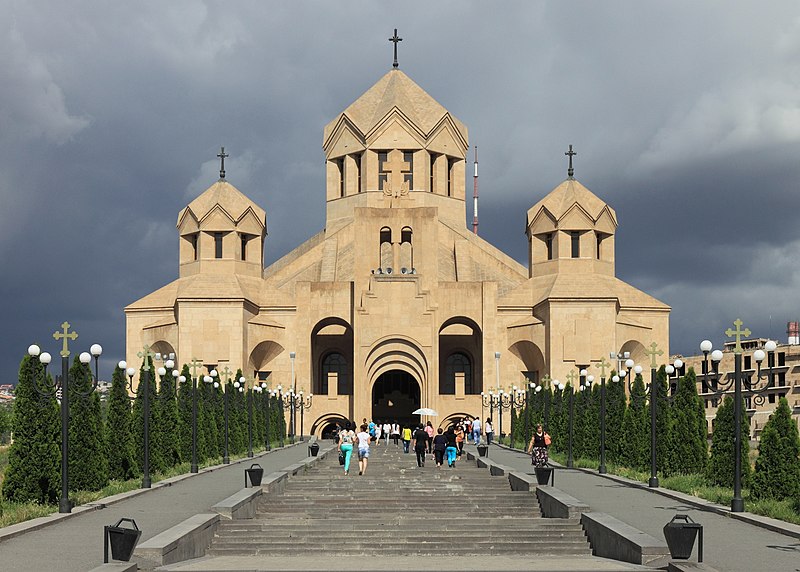


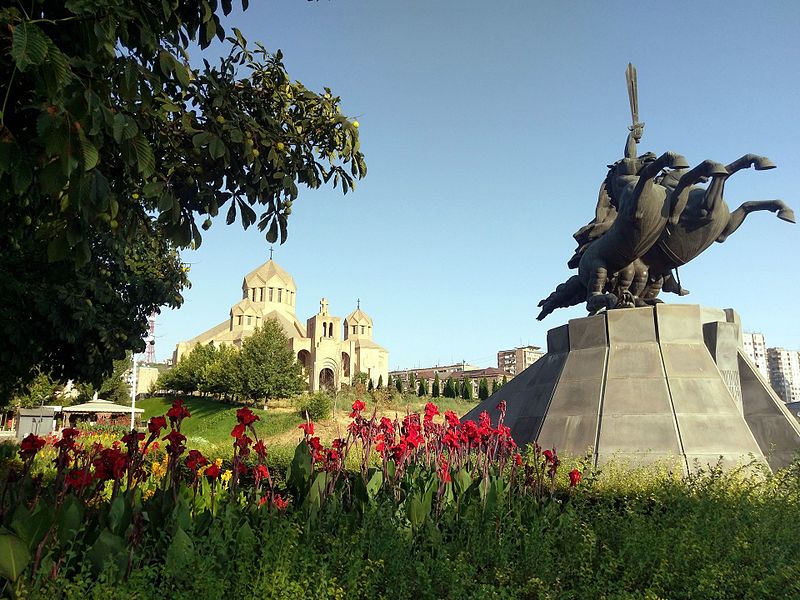
The Cathedral (Main Church) with 1700 seats and the Chapels of Saint Tiridates the King and of Saint Ashkhen the Queen (both with 150 seats). These two royal figures were crucial in helping St. Gregory the Illuminator to convert the Armenians to Christianity. 







The total area of the complex is around 3,822 square meters (41,140 square feet), while the height of the cathedral from the ground to the top of the cross is 54 meters (177 feet). 

The Russian Orthodox Cathedral of Saint Nikolai was designed in 1891 and approved in 1894. It was built in 1901-1910 in the historic Hin Kałak neighborhood of Kentron District. It was one the largest structures in Yerevan until its destruction sometime between 1926 and 1931. 




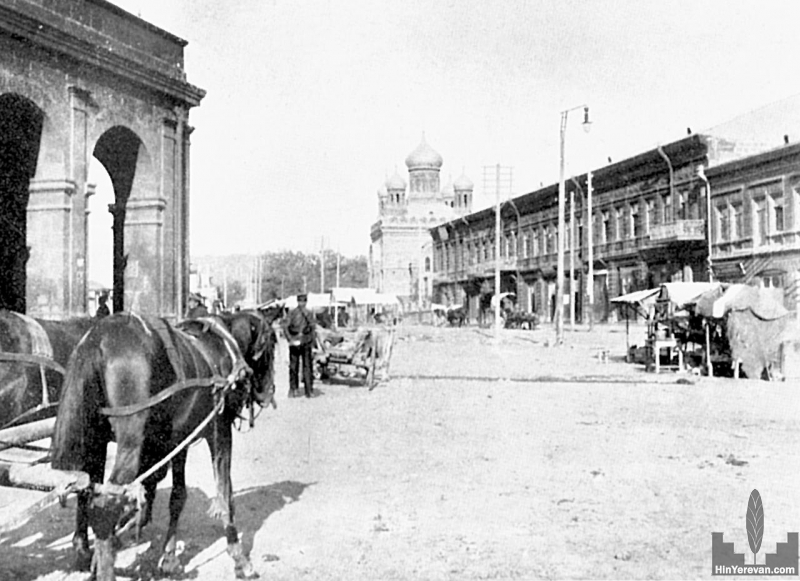


Here you can see Yerevan in the 1920s with Mount Azhdahak (3,597 m or 11,801 ft) in the back:
1) Left: the Armenian Church of Saint Gregory and the Russian Church of Saint Nikolai
2) Right: The Russian Church of Saint Nikolai and the Shia Blue Mosque

1) Left: the Armenian Church of Saint Gregory and the Russian Church of Saint Nikolai
2) Right: The Russian Church of Saint Nikolai and the Shia Blue Mosque
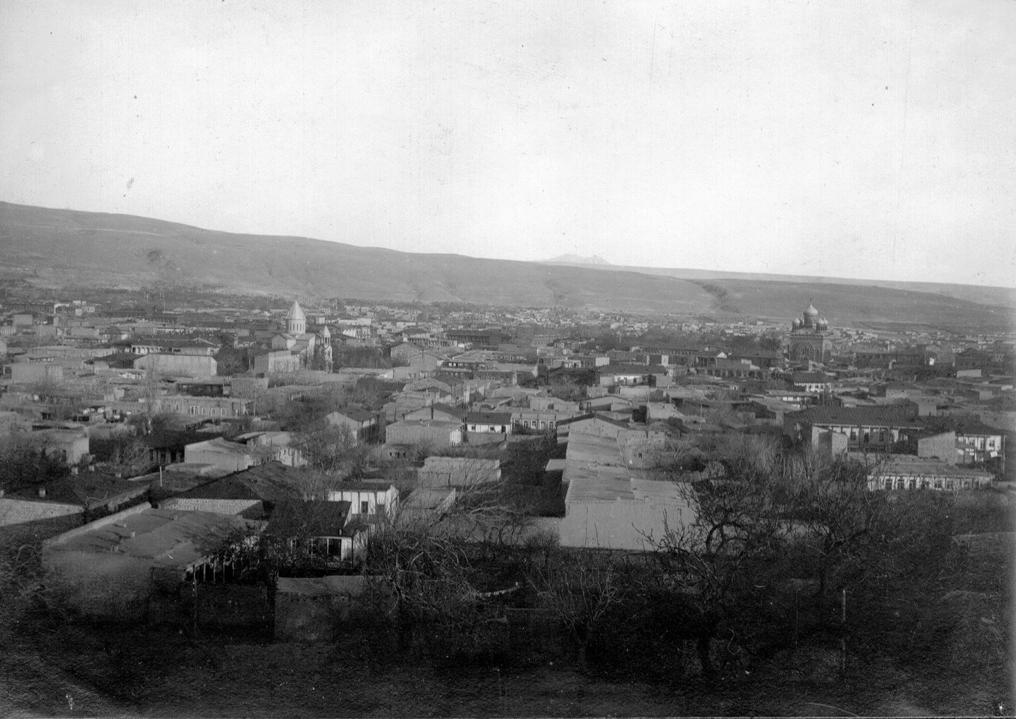

Upon its destruction sometime between 1926-1931, it was replaced with Shahumyan Square named after Stepan Shahumyan, an early Bolshevik leader of Armenian ancestry from Tbilisi known as the “Caucasian Lenin.”
Images of the Square in the late Soviet era and today, a lot changed.



Images of the Square in the late Soviet era and today, a lot changed.

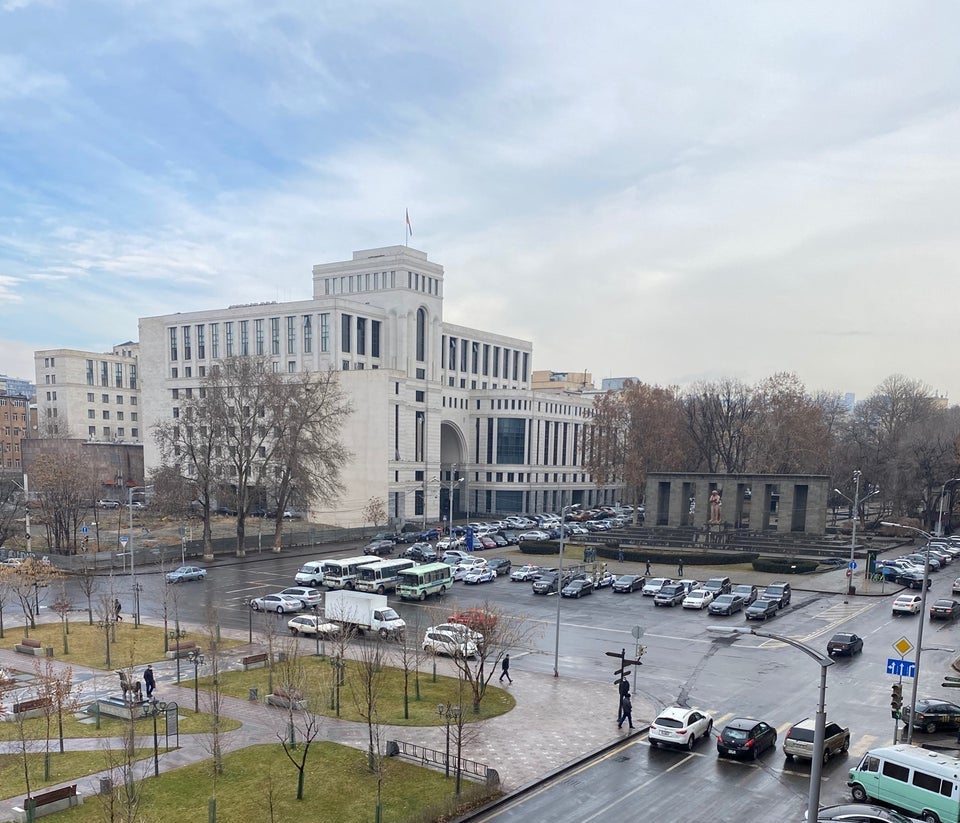


The Sunni Rajap Pasha Mosque was built by Ottoman statesman Recep Pasha in 1725 during the temporary Ottoman occupation of Yerevan over the site of a Shia mosque inside the Fortress of Yerevan. It was converted into the Russian Orthodox Church of the Holy Mother of God in 1827. 



The Russian Orthodox Church of the Holy Mother of God was known as the "Pokrovsky" Church. It was destroyed in the 1930s along with much of the structures of the Fortress of Yerevan by the Soviet authorities. 

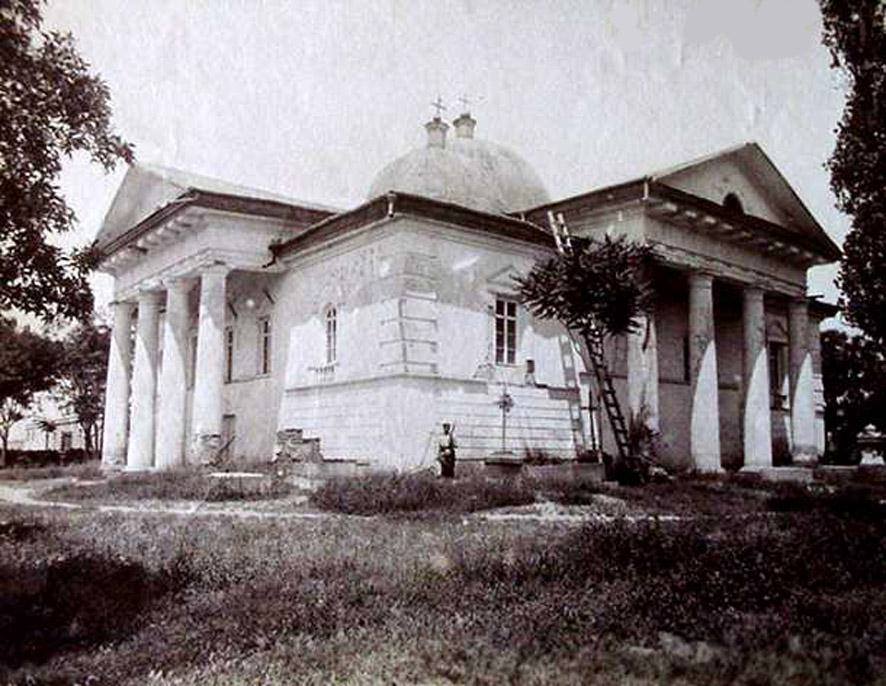

Shengavit District is located southeast of Kentron District. It is based around the Bronze Age era Shengavit Settlement (3200-2200 BC). It is the second largest district by area, but the most populated, being home to 135,535 people (as of the 2011 Census). 

The Church of Saint George (Surb Gevorg Yekełetsi) was built in the 17th century in the historic Noragavit neighborhood of Shengavit District. It was rebuilt in 1981-1984 and paid for by an Argentina-born Armenian benefactor, Eduard Seferian. 



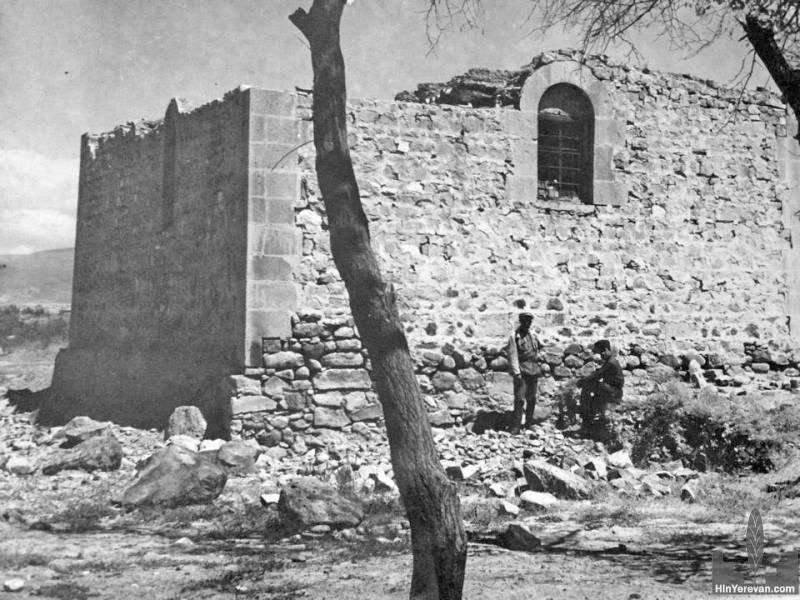
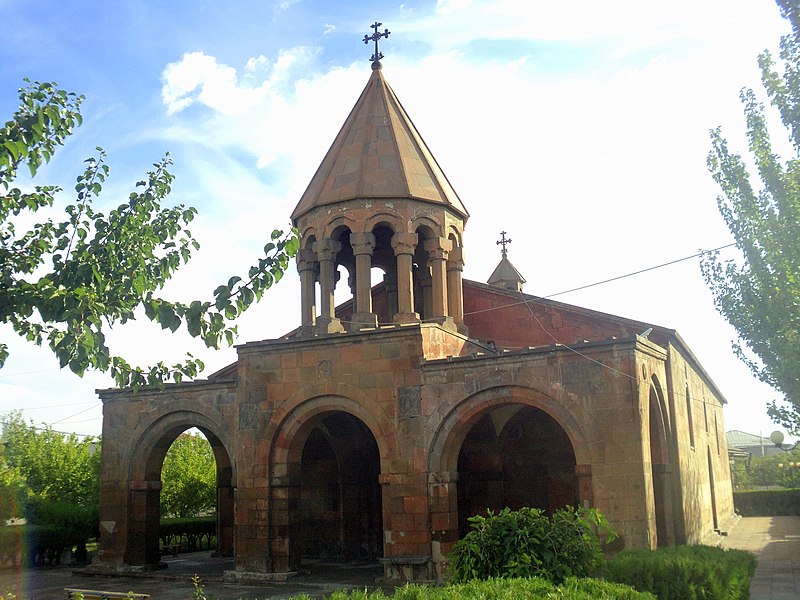


The Church of Holy Sunday (Surb Kiraki Yekełetsi) was built in the 19th century and is located adjacent to the Church of Saint George in the historic Noragavit neighborhood of Shengavit District. 

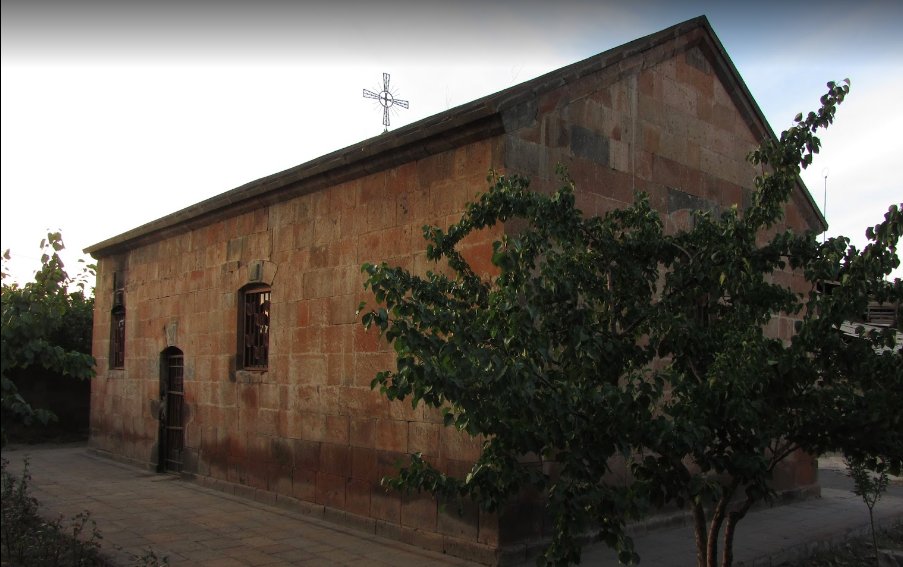

The Chapel of Mler (Mleri Matur) was built in 1830-1850 in the new Armenian Cemetery, located in the south of Yerevan, today’s Shengavit District. It was destroyed in 1935 and replaced by the Komitas Pantheon. 



The Chapel of the Zoravor Holy Cross (Zoravor Surb Khachi Matur) was built in 1991 by a local resident Ruben Gasparyan in the site of a medieval khachkar in the Shengavit District. 







The Church of the Holy Cross (Surb Khach Yekełetsi) was built in 1996-2006 (belfry 2012) in the historic Nerkin Charbakh neighborhood of Shengavit District. Financed by Khachatur Vardanyan and designed by Hrachya Gasparyan, based on the Cathedral on Aghtamar Island in Lake Van. 







The Church of the Holy Apostles (Surb Arakelots Yekełetsi) was built in 2019 in the historic Verin Shengavit neighborhood of Shengavit District. 


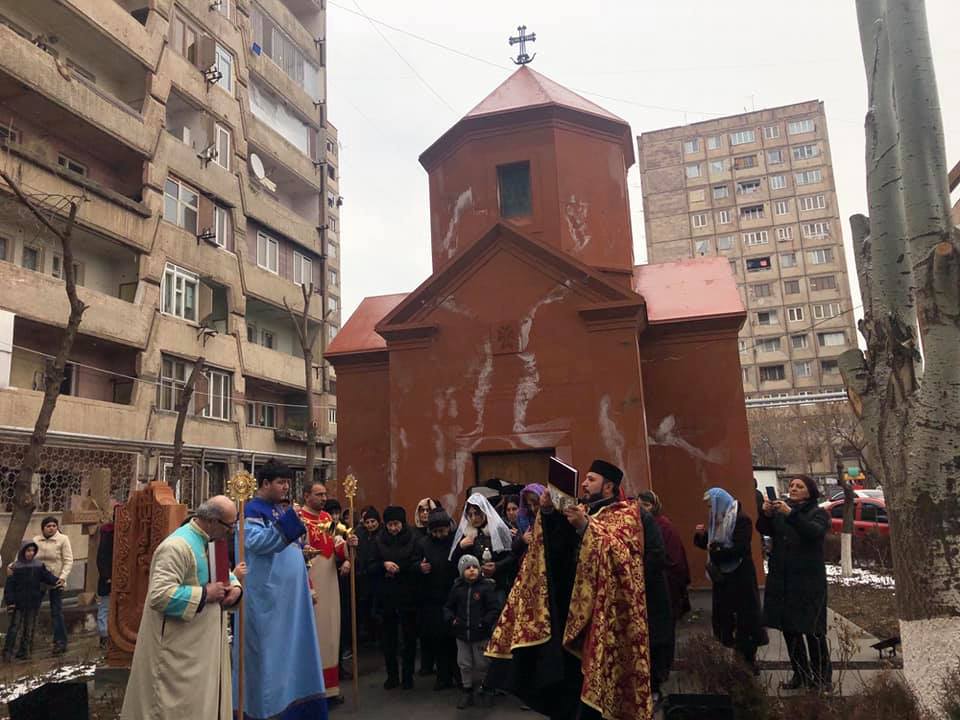
The Church of the Holy Martyrs (Srbots Nahatakats Yekełetsi) is planned to be located on Arshakunyats Avenue in Shengavit District. It was designed by Artak Ghulyan in 2015. Construction has not begun at the site. 





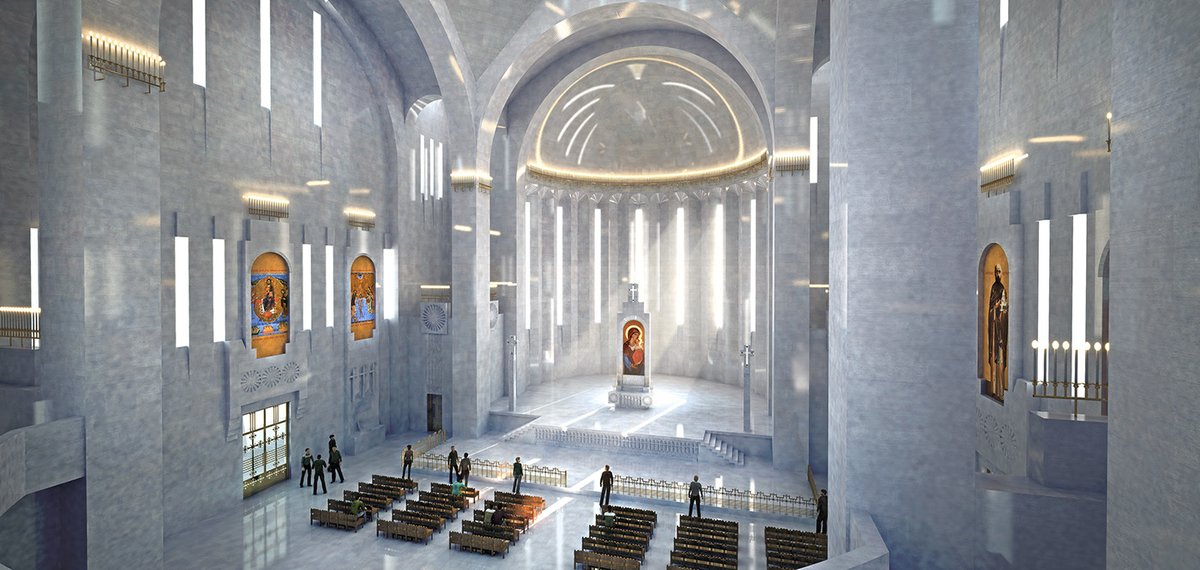
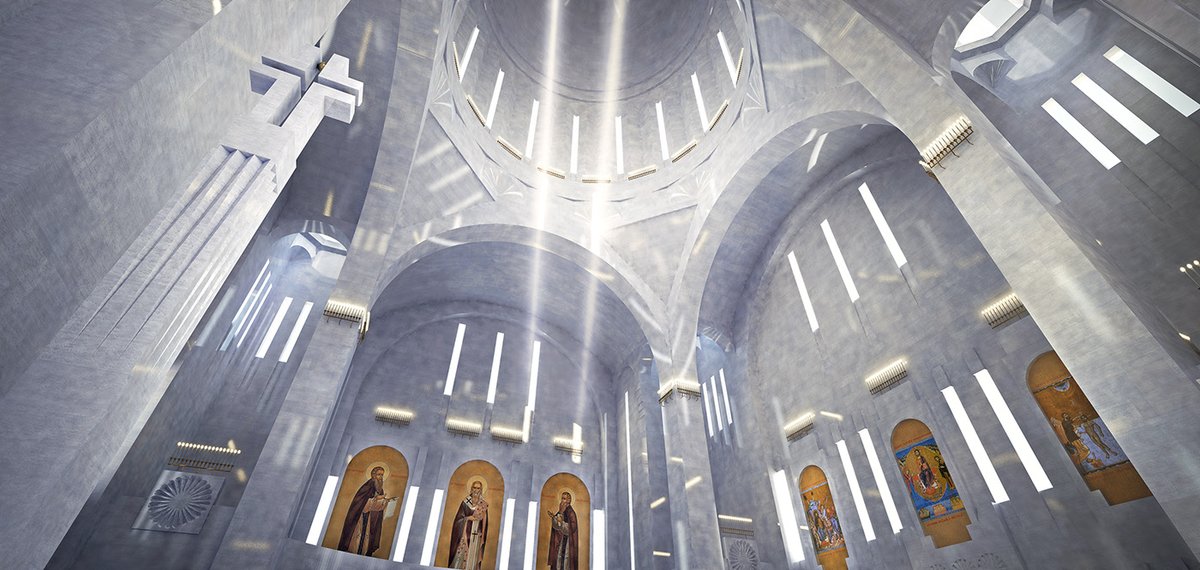
The Russian Orthodox Cathedral of the Holy Cross was built on the shores of Lake Yerevan in 2010-2017. Interestingly enough, its located right in between the US and Chinese Embassies. 




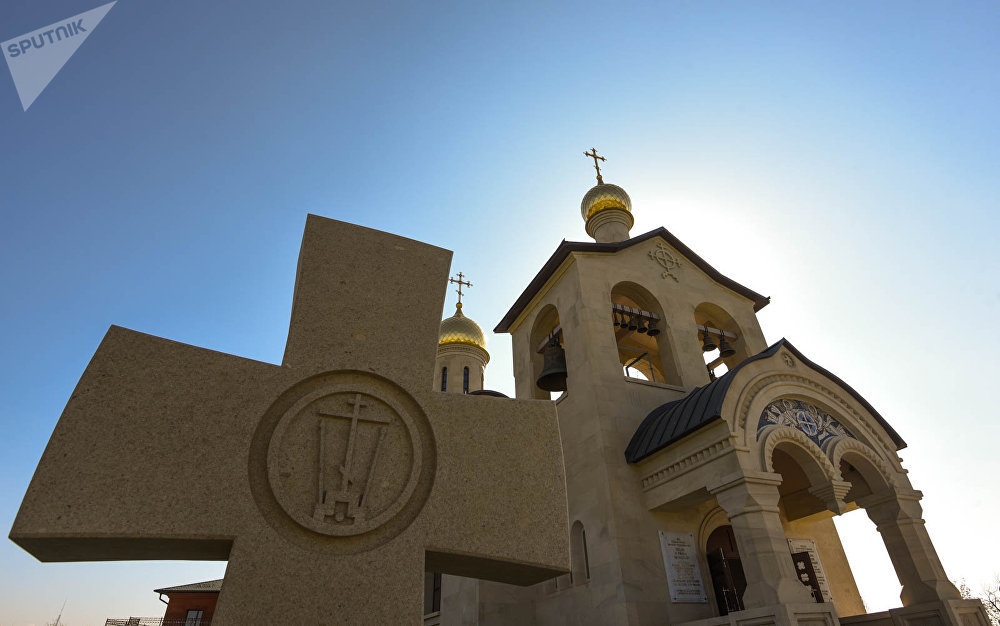
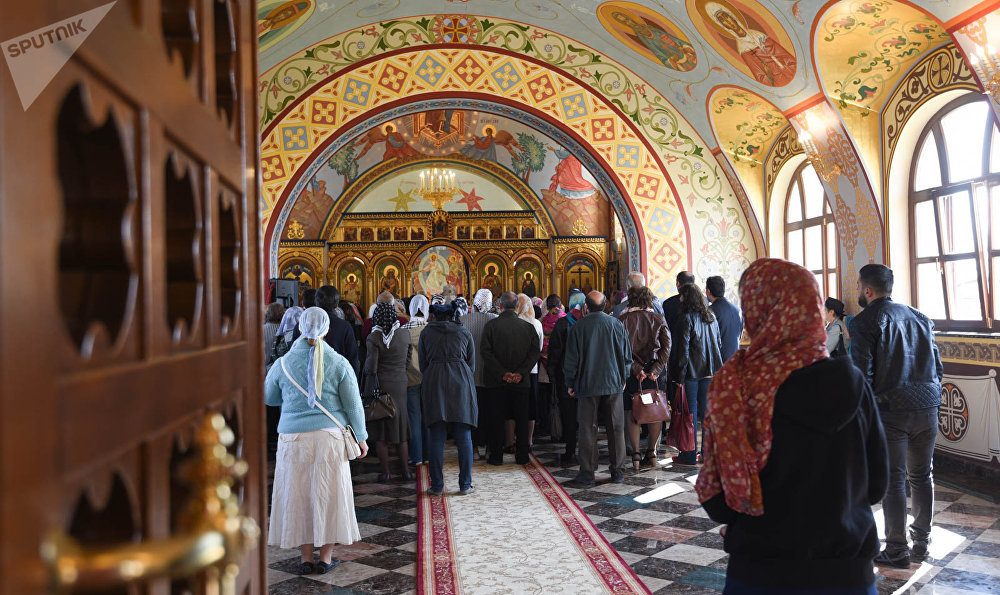
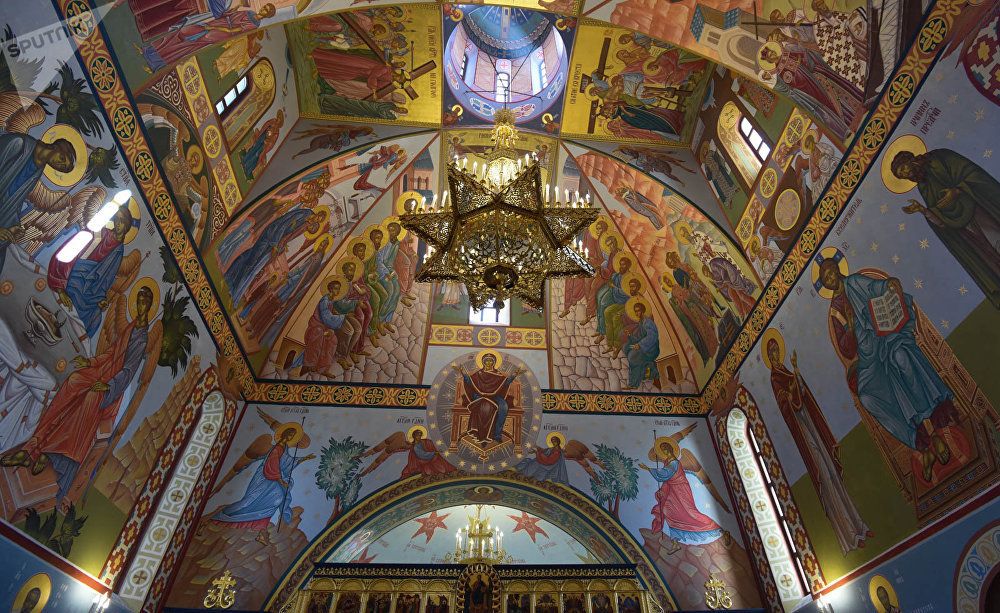
Nubarashen District was founded in 1923-1932 by the AGBU to house #ArmenianGenocide that would repatriate to Soviet Armenia. is located southwest of Kentron District. It is a large district, but sparsely populated, being home to only 9,561 people (as of the 2011 Census). 

The Church of the Holy Martyrs (Srbots Nahatakats Yekełetsi) in the Nubarashen District was built in 2012-2015. It is the only church in the district. 







Malatia-Sebastia District founded in 1925 by #ArmenianGenocide survivors from Malatia (Malatya, Turkey) and Sebastia (Sivas, Turkey). It is home directly west of Kentron District and is home to 132,900 people, making it one of the most densely-populated districts of Yerevan. 

The Church of the Holy Mother of God (Surb Astvatsatsin Yekełetsi) was built in 1991-1998 in the Nor Sebastia neighborhood of Malatia-Sebastia District. The area was settled by Armenians from Sebastia (modern-day Sivas, Turkey) in 1927. 







The Church of the Holy Trinity (Surb Yerordutyun Yekełetsi) was built in 2001-2005 in the Nor Sebastia neighborhood of Malatia-Sebastia District. The area was settled by Armenians from Sebastia (Sivas, Turkey) in 1927. It is modeled after the 7th century Zvartnots Cathedral. 





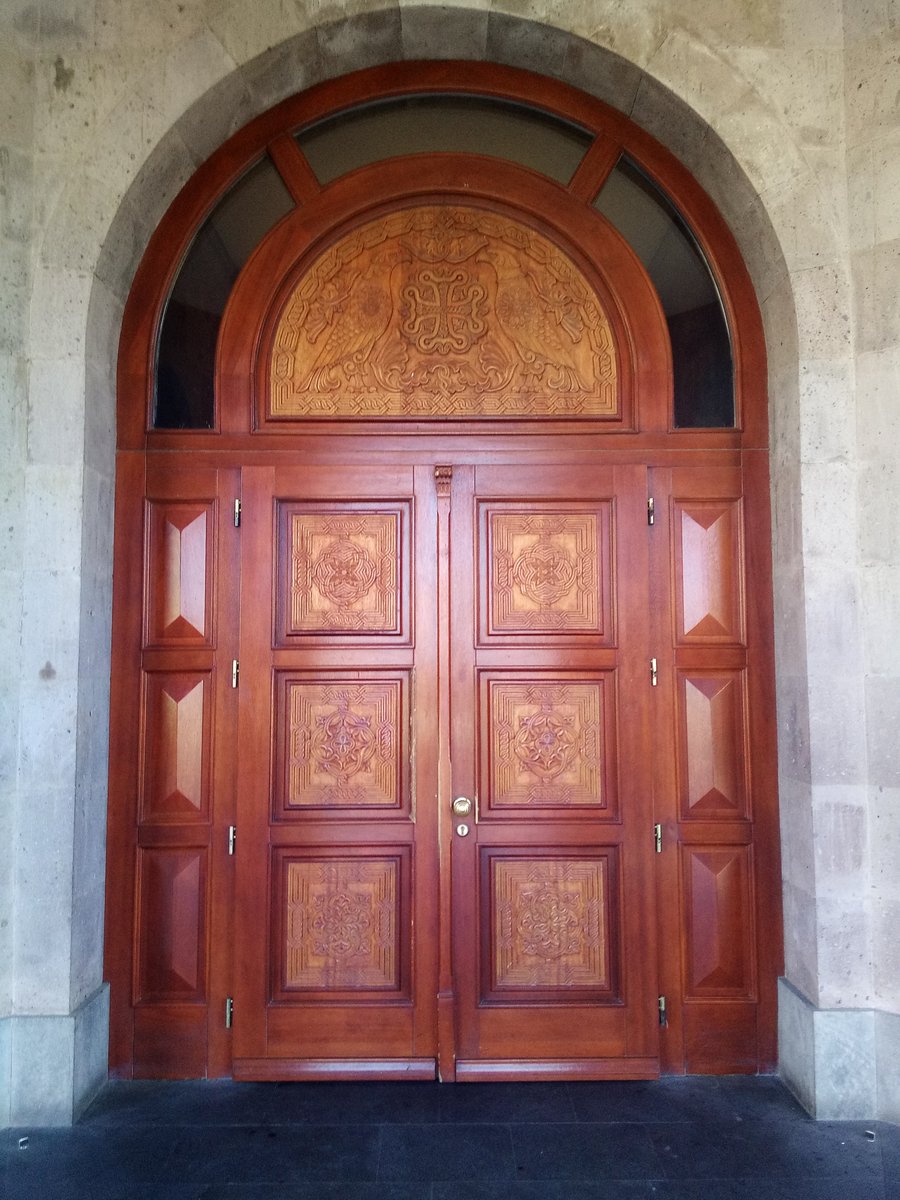

The Chapel of the Holy Vardanants Martyrs (Surb Vardanants Nahatakneri Matur) at the Yerablur Military Cemetery was built in 1998. Yerablur is the resting place of some 10,000 Armenians (~5,900 from 1988-1994; ~100 from 2016; ~4,000 from 2020) who gave their lives for #Artsakh. 







Davtashen District is Yerevan's northern-most district. It was home to 42,380 (as of the 2011 census). It was established in the 1970s as Yerevan grew. 3 buildings were built here for Syrian-Armenian Refugees and some 200 families live here thanks to the “Help Your Brother” NGO. 

The Church of the Holy Martyrs (Srbots Nahatakats Yekełetsi) in the Davtashen District was built in 1996-2003. It is the only church in the district. 






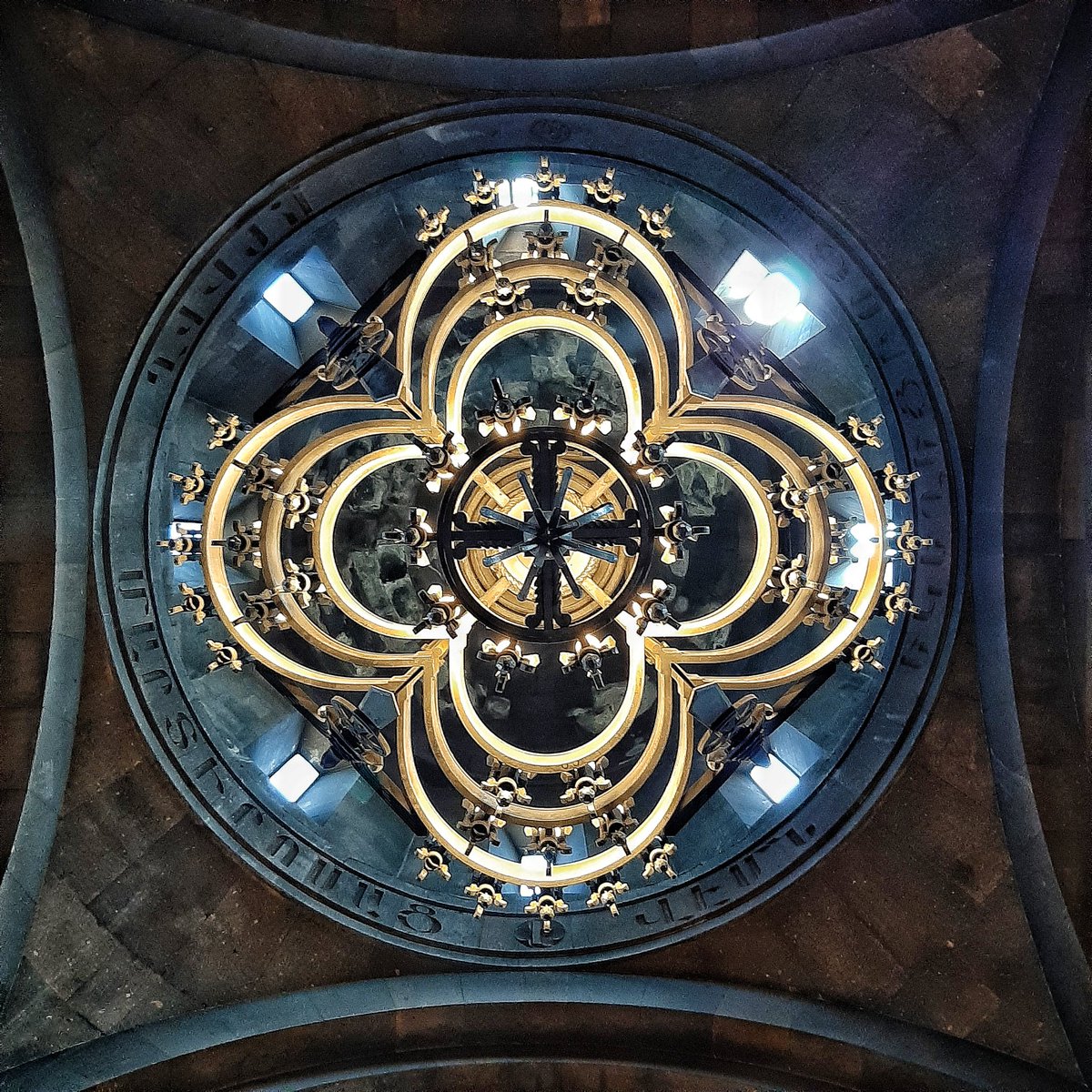
Arabkir District is located just north of Kentron District. It was founded in 1922-1925 by #ArmenianGenocide survivors from modern-day Arapgir, Turkey. A number of ethnic Russian Molokans from northern Armenia have also settled here as well as many Iranian-Armenian repatriates. 

The Church of the Holy Cross (Surb Khach Yekełetsi) was built in 2018 in the Arabkir District. It is the only church in Arabkir District. 







Kanaker-Zeytun District is located northeast of Kentron District. Kanaker was a historical settlement. Kanaker was adjoined to Nor Zeytun. Nor Zeytun was founded by Syrian-Armenians in 1948 originally from Zeytun (modern-day Süleymanlı, Kahramanmaraş). Its home to 73,886 people. 
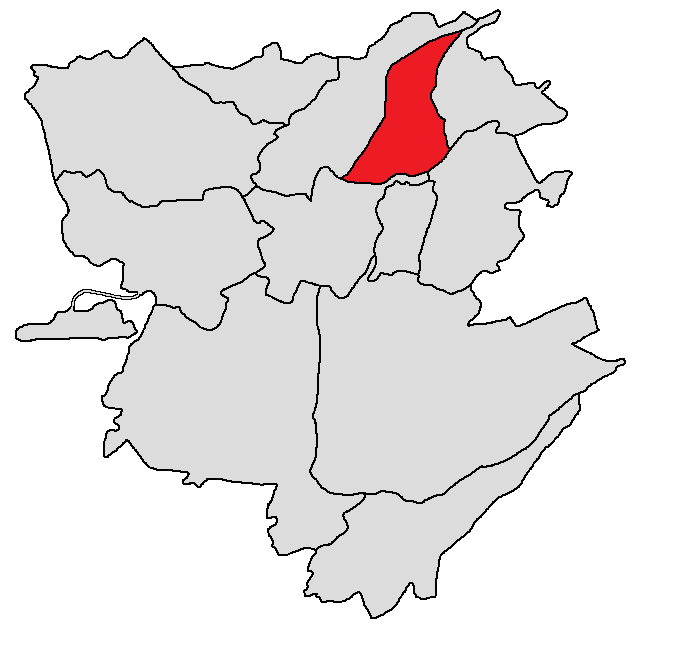
The Church of Saint Jacob (Surb Hakob Yekełetsi) in the historic Kanaker neighborhood of Kanaker-Zeytun District was rebuilt in 1679 after being destroyed during the earthquake that same year. 



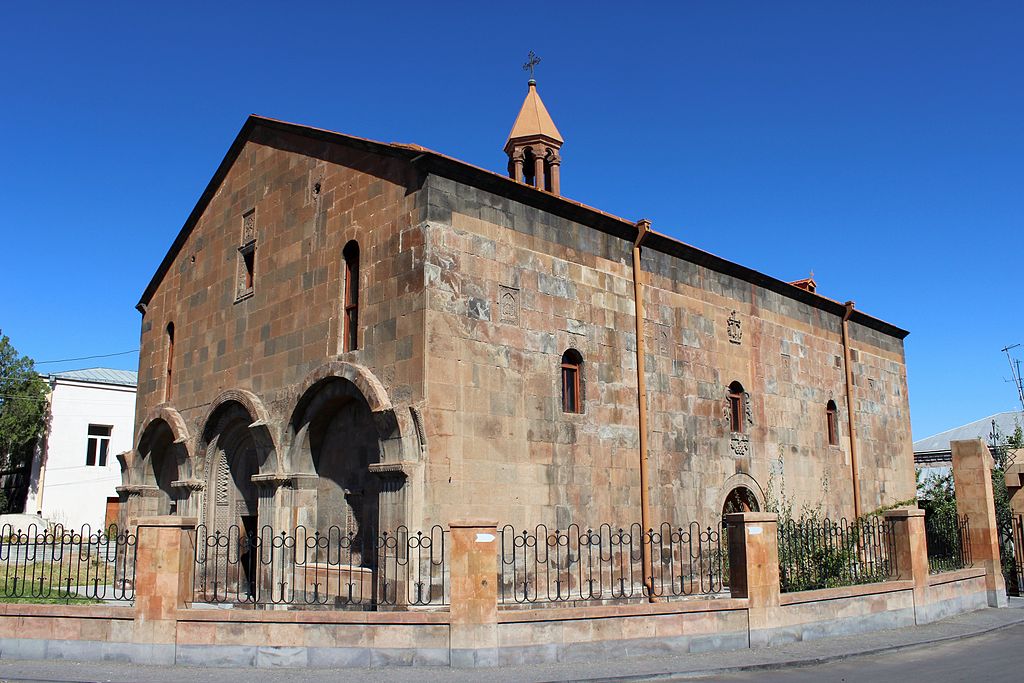



The Church of Saint Jacob was converted into a storehouse during the Soviet era. It was reopened in 1990. 




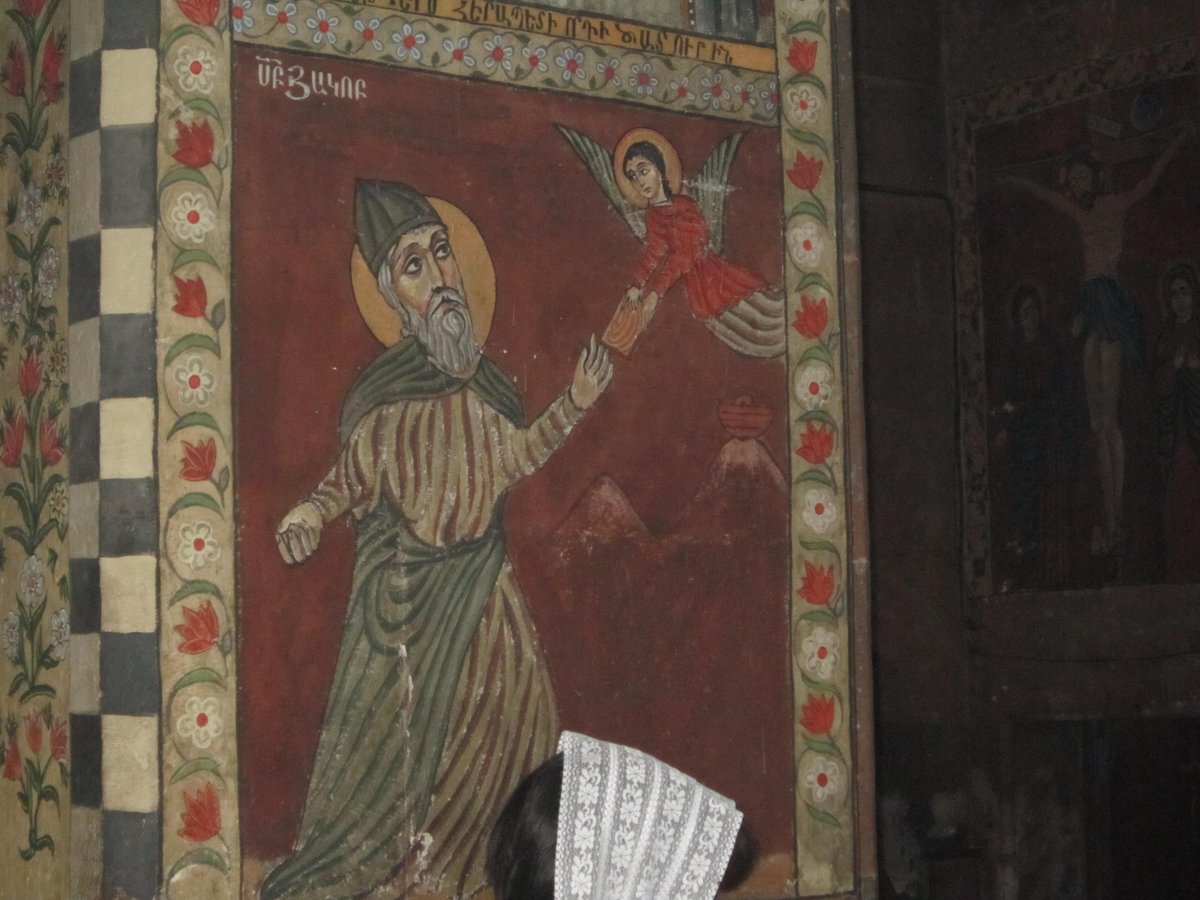


The Church of the Holy Mother of God (Surb Astvatsatsin Yekełetsi) in the historic Kanaker neighborhood of Kanaker-Zeytun District was destroyed during the 1679 earthquake, but rebuilt in 1695. 



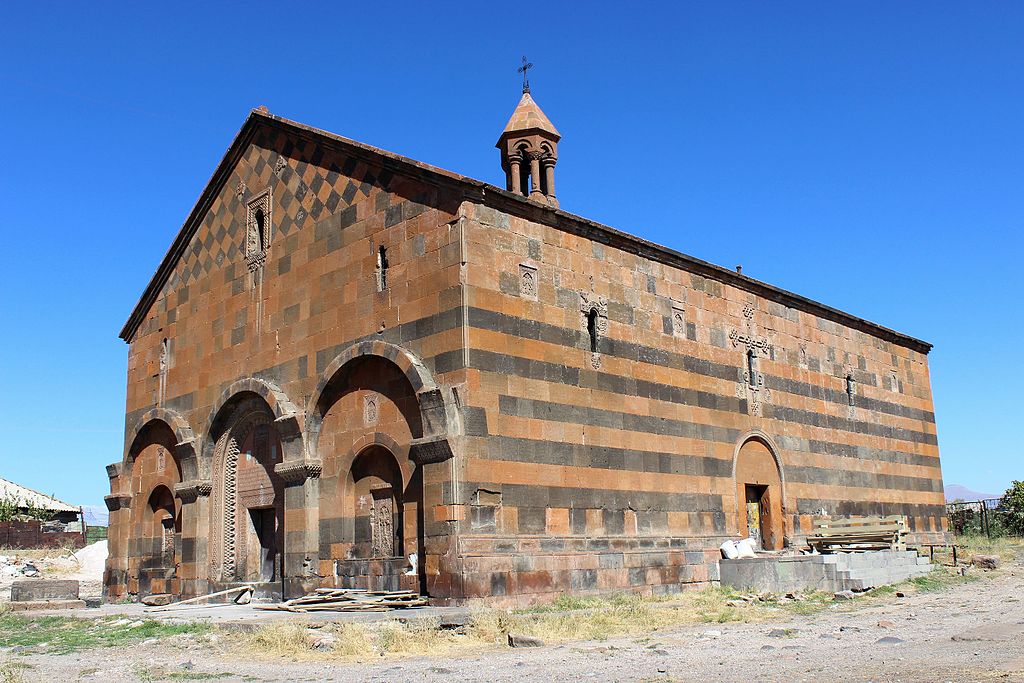
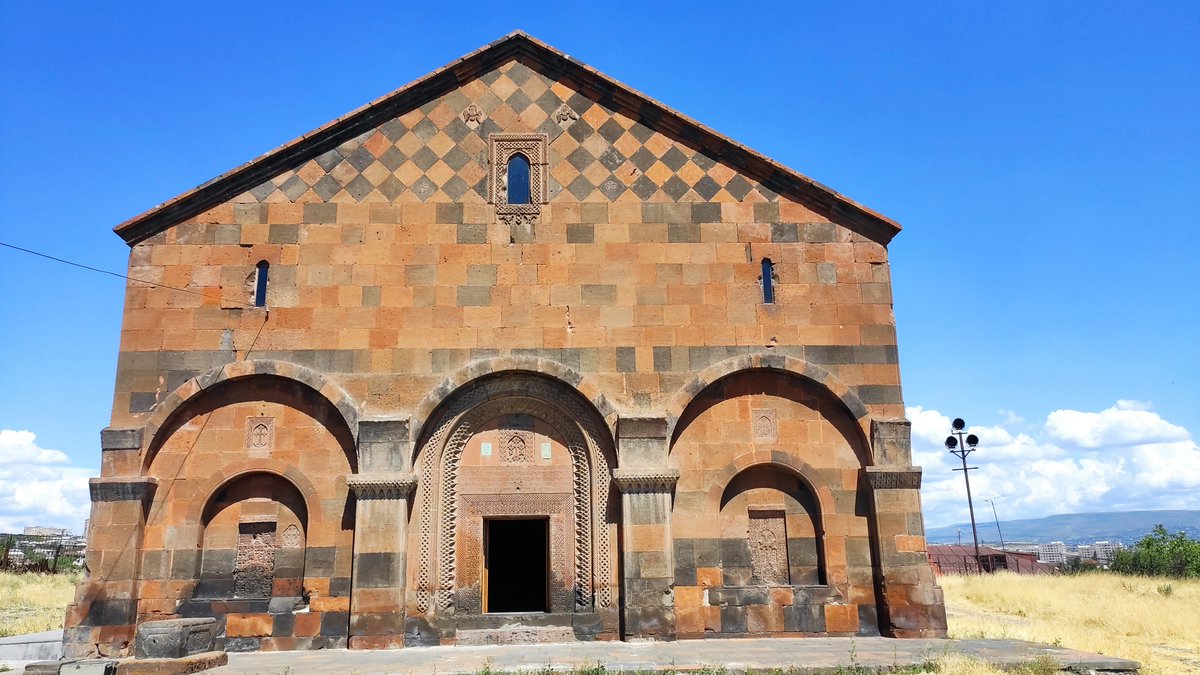


The Church of the Holy Mother of God was converted into a storehouse during the Soviet era. It was reopened in 1990. 







The Armenian Catholic Jean & Indra Boghossian Center was built in 2001 to celebrate the 1700th anniversary of the conversion of the Kingdom of Armenia to Christianity in the historic Kanaker neighborhood of the District. Catholics have lived in Yerevan since as early as 1653. 






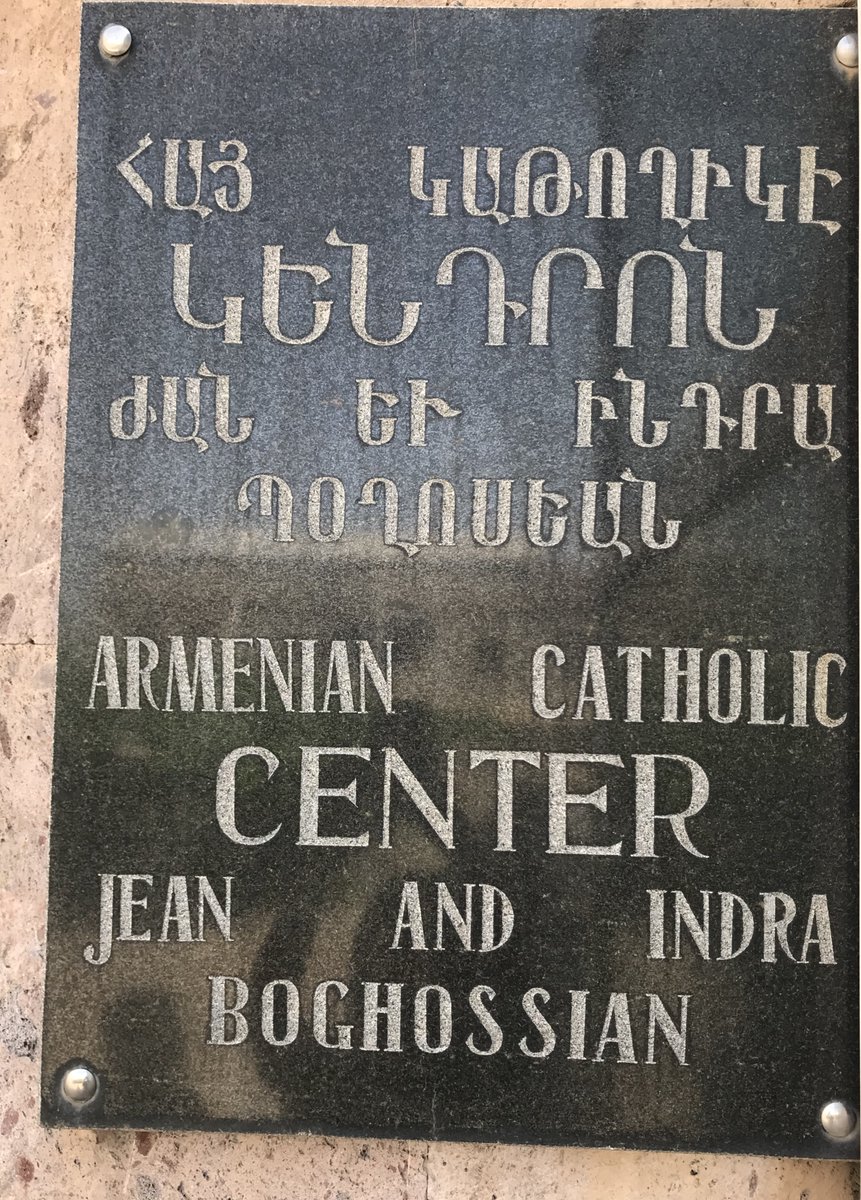
The Armenian Catholic Chapel of Saint Gregory of Narek (Surb Grigor Narekatsi Hay Katołike Matur) was built in 2019 in the courtyard of the Boghossian Center. Most live in the north, specifically Gyumri along with 7 villages in Shirak Province and 8 villages in Lori Province. 




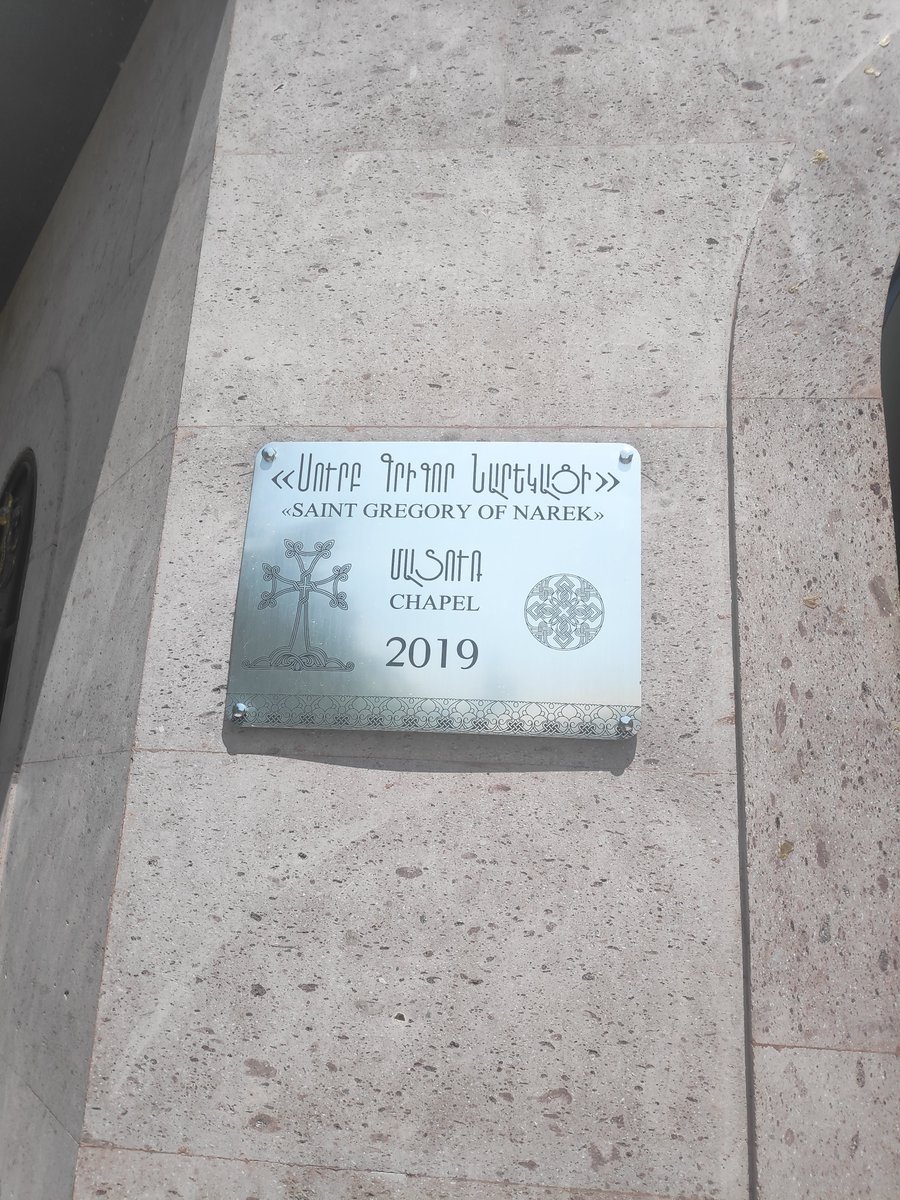


The Russian Orthodox Church of the Intercession of the Holy Mother of God in the historic Kanaker neighborhood of Kanaker-Zeytun District was built in 1913-1916. It was used by the 2nd Caucasian division of the Russian Army stationed in Kanaker. 






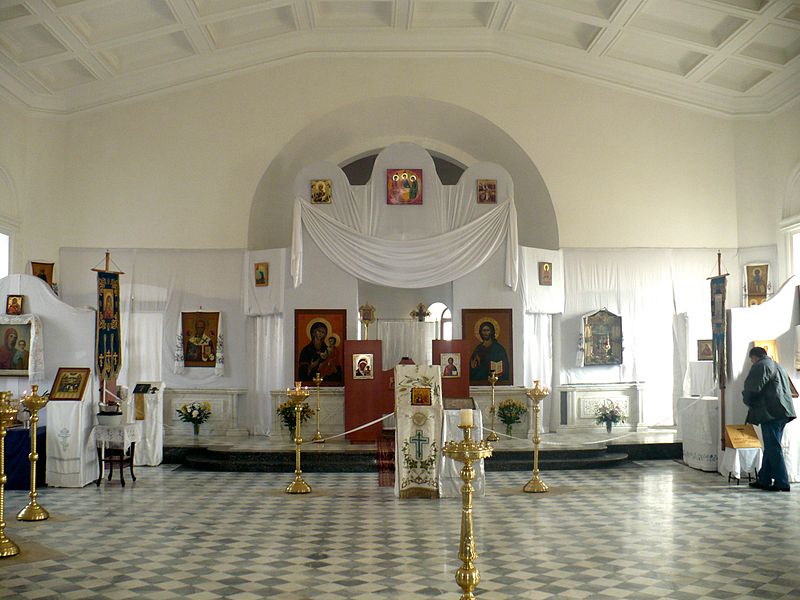
The Russian Church of Kanaker was shut down and used as a warehouse during the Soviet era. It was reopened in 1991 and renovated in 2000. In 2012 its 100th anniversary was celebrated in the presence of Armenian and Russian clerical members. 







• • •
Missing some Tweet in this thread? You can try to
force a refresh

